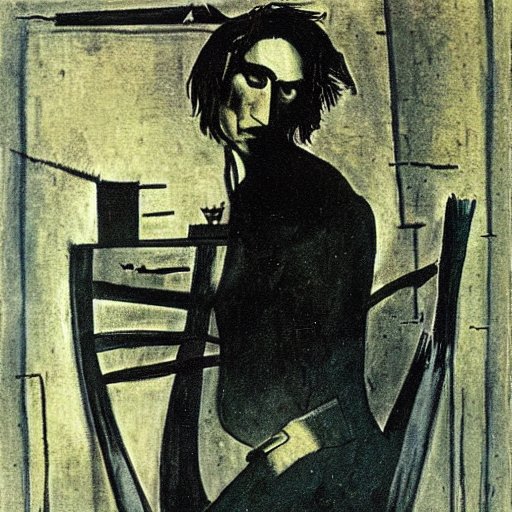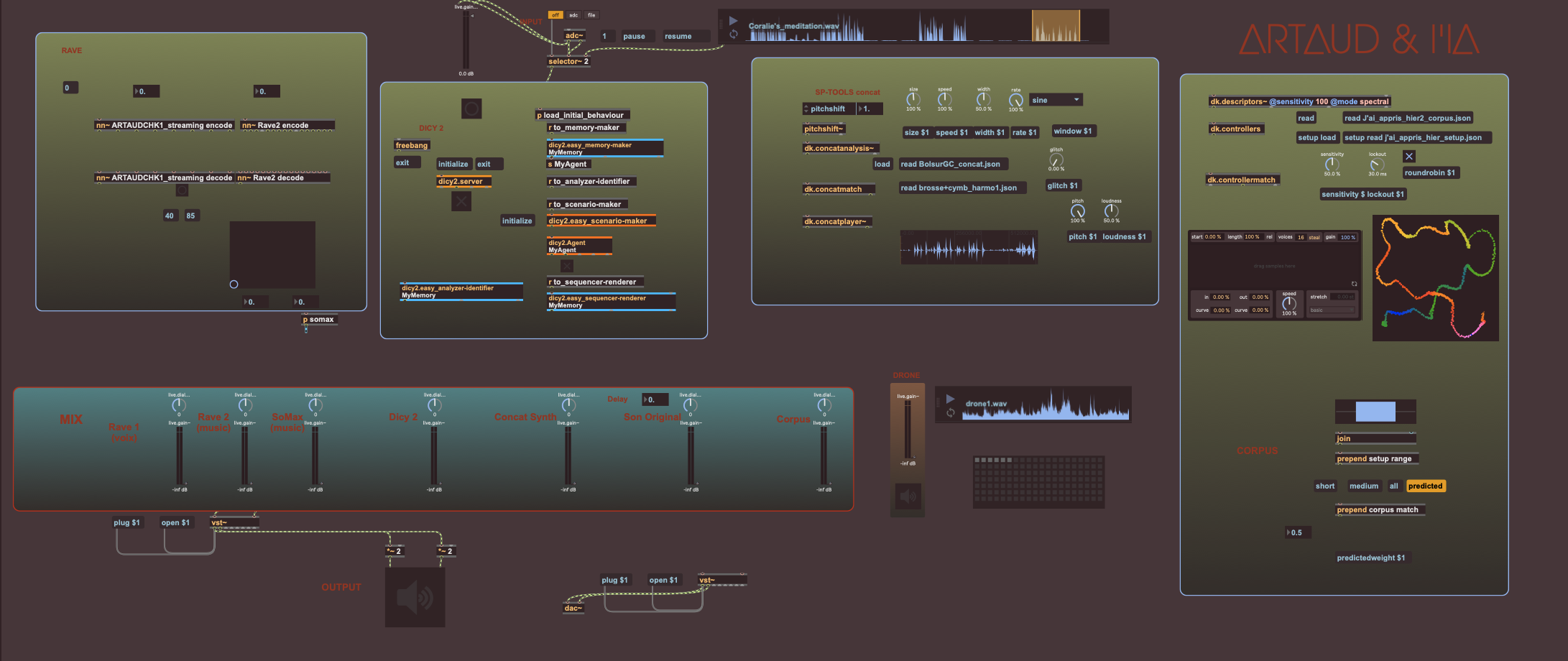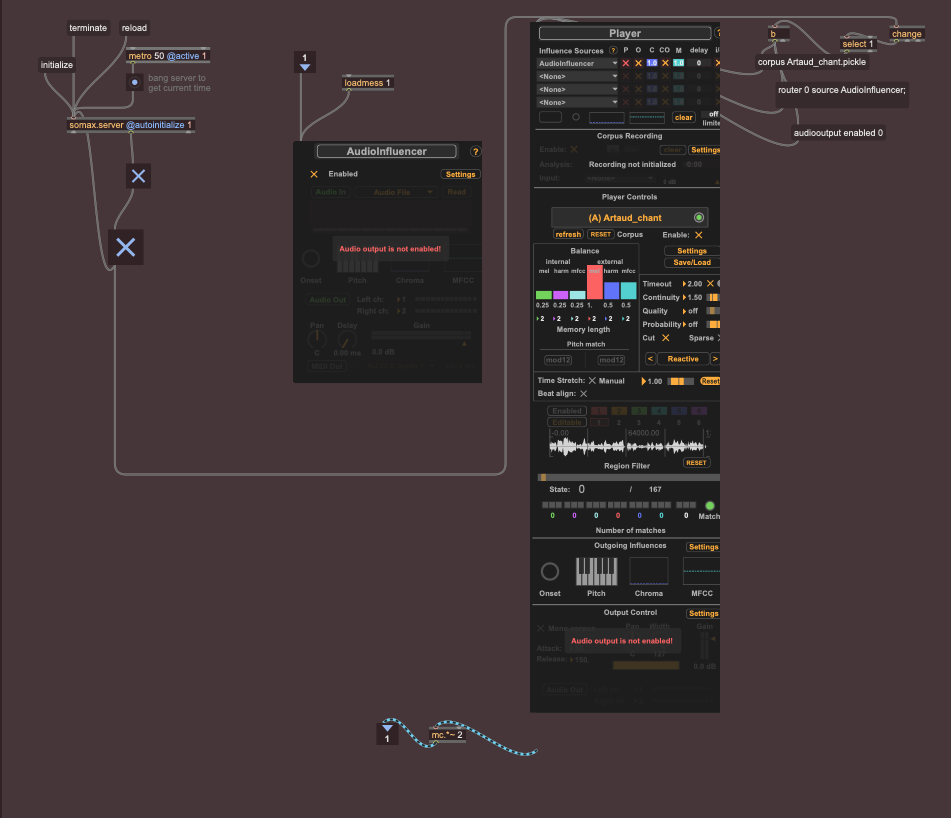↩ Back to IRCAM Forum Workshops Rīga-Liepāja (Latvia)

The concept of confrontation between madness and the rationality of computational models is at the heart of my project “Artaud and AI”. I was fascinated by the voice of Antonin Artaud, which I would describe as “peculiar, shifting, disturbing, beautiful and hideous at the same time,” as well as by the “organic, modern, and unreal” sounds of his original 1947 recording. This sound, reminiscent of noise music and the works of Japanese artists like Kenji Siratori, and including Artaud’s unique and musical glossolalia, immediately captivated me.
Here is how this confrontation is envisioned and implemented in the project:
-
The Core of the Artistic Approach
◦ The project explicitly aims to confront Artaud’s voice — and by extension, his madness, rage, and violence — with the algorithmic rationality of computational models. The ambition is to create a new sonic language using Artaud’s poetry and recordings as foundation and raw material. It seeks to explore new ways of combining music and poetry, using the computer as a tool to create a unique interaction between text, sound, music, and actor performance in the full version.
-
Artificial Intelligence as a Mirror of Human Creativity
◦ The project explores the boundaries between artificial intelligence and human creativity by diverting the principles of Machine Learning in an innovative and provocative way. Its goal is to establish a dialogue between the algorithmic rationality of the machine and the unpredictability of human artistic expression. Artaud’s work, through its modernity, visionary nature, and disturbing quality, is considered perfectly aligned with this idea.
-
Methodological Approaches Based on Machine Learning
◦ The three pillars of Machine Learning are used as lenses to rethink artistic creation in this project.
◦ Supervised learning will serve to reinterpret artistic styles.
◦ Unsupervised learning will be the preferred tool for exploring the unknown, by feeding the models unconventional raw data, particularly the sounds from Artaud’s 1947 recording. The goal is to reveal hidden patterns and transform them into abstract compositions. This echoes Artaud’s idea of the “theatre of cruelty”, where dialogue and words lose their meaning to retain only the sensory.
◦ Reinforcement learning will make it possible to create autonomous musical agents capable of interacting in real time with human performers. These virtual entities will learn to improvise, react, and evolve, thus blurring the boundaries between creator and creation.
- The Pach

-
-
Currently, I am working on a specific patch for the performance in Liepaga. The patch presented here, from which it will be derived and modified for the presentation, currently consists of four modules:
- The first module utilizes RAVE and the nn~ object. Two models are employed:
- The first model is a rapid and concise « training » of Artaud’s own voice. Regrettably, I lacked the time to complete the training, but the resulting sound and color were entirely satisfactory.
-
- The second model is the RAVE2 model, which I believe was trained with orchestral sounds.
- An XY slider enables real-time influence on the generation.
- The output of this second model is routed to Somax2, which has been trained with all the more or less sung parts by Artaud in the original 1947 recording. I intend to incorporate a second agent in the subsequent version.
- The second module is dedicated to Dicy2, which generates piano and voice sequences utilizing the text and voice of Antonin Artaud, as well as real-time instrumental performance.
- Modules 3 and 4 employ concatenative synthesis objects from Rodrigo Constanzo’s « Data Knot » package. However, I am considering replacing module 3 with another Somax agent utilizing Prosax by Mikhail Malt and the REACH team.
-

-
Fundamental Questions Raised by the Confrontation
◦ The project seeks to answer two essential questions:
- What understanding can artificial intelligence have of human madness? By confronting algorithms with “irrational” or chaotic data, the project aims to shed light on the limits of computer logic when faced with the complexity of the human mind.
- How does the rationality of the machine oppose the irrationality of human behavior and thought? By designing situations in which AI must interpret or respond to unpredictable human behaviors, it becomes possible to explore the contrasts and potential synergies between these two forms of intelligence.
-
Performance as an Embodiment of the Confrontation
◦ On stage, the initial scenography proposes a minimalist and decrepit Artaud’s room for the narrator, contrasting with a sterile and white environment for the musician and the computer, representing the “MACHINE or the subconscious of Antonin Artaud”.
For a solo performance, I take on the role of the musician interacting directly with the “Machine”. The process is dynamic and non-preprogrammed, except for the text of “To Have Done with the Judgment of God”, and various sound corpora that will serve as fixed data. Each performance will be unique, with a changing “soundtrack” resulting from this real-time interaction. The sonic universe of the show will function like a trio between the spoken text, the musician’s interventions, and the machine’s “proposals”. This ongoing dialogue between human play and AI-generated responses illustrates the confrontation between Artaud’s unpredictably mad spirit and the rationality of the algorithm.
-
Objectives and Stakes
The artistic approach aims to be both critical and constructive, seeking to demystify AI by exposing its limitations and potential in a tangible and accessible way. The goal is to encourage reflection on our relationship to emerging technologies and their place in the creative process, and to open up new paths of artistic expression at the intersection of human and machine.
This talk is part of IRCAM Forum Workshops Hors-les-Murs 2025 Rīga-Liepāja (Latvia)